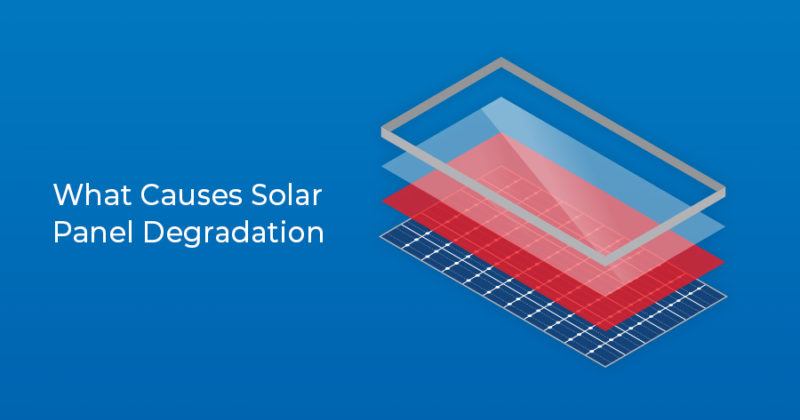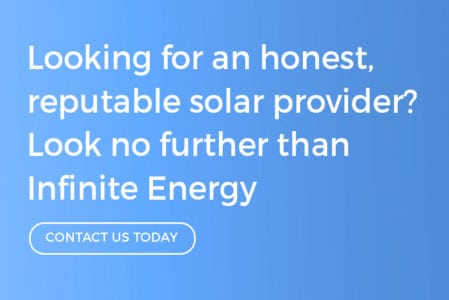Why Do Solar Panels Degrade?

Solar panel degradation refers to when a solar panel loses its power output over time. Often this period is measured against the products lifetime. While solar panel degradation is not ideal, a good quality solar panel will have low degradation rates that won’t affect the performance of your system too greatly. On average, a quality solar panel will experience a degradation rate of 0.5-3% each year over the course of its lifetime.
Solar Panel Degradation and Its Causes
Solar panel degradation is caused by external factors that are unavoidable like UV exposure and weather changes. Thus, degradation is completely normal and is expected to occur. When solar panels degrade, their power outputs are reduced. Degradation rates differ, however most quality panels still carry up to 90% of their output efficiency after 20-25 years. The degradation rate of solar panels is accounted for in the products performance warranty.
Mainly, there are three types of solar panel degradation:
- Light-induced degradation (LID) – LID occurs when the solar panel is first exposed to solar radiation, and as a response, the photoconductivity of the panel is reduced. This is considered an ‘adjustment’ stage for the panel, also called ‘initial degradation’, and occurs within the first 1000 hours of operation. Efficiency of the panels in this stage is reduced by 1-3% on average and will stabilise after this.
- Potential-induced degradation (PID) – This type of degradation doesn’t always occur, however if it does, it can reduce a panels performance by 30%. PID occurs when different components in a system are at different voltages, for example the solar cell and the frame of the panel, causing a disruption in the voltages. This variance causes voltage leaks, and subsequentially reduces a panels power output.
- Aging-related degradation – Naturally, solar modules are exposed to external factors which makes degradation unavoidable. Anti-aging degradation is the natural wear and tear of solar panels. Factors that can cause this include chemical reactions in semi-conductive materials that can cause crystalline hardening, contamination of the cells, shadowing effects and weather cycles.
Another factor that can speed up degradation rate is the quality of materials used in manufacturing the panels. To keep prices low, some manufacturers reduce the aluminum used, which makes the frames thinner causing them to be more vulnerable to degradation. This illustrates why choosing a cheap solar panel can increase the risk of product failure, costing you more in the long run.
Maintaining solar panels
One of the many benefits of solar panels is their low maintenance requirements. Generally the only maintenance you will need to do is occasionally cleaning your solar panels. Often natural rain is enough to keep them clean, however if they are especially dusty, you may need to give them a more thorough clean.
Choosing a high-quality solar panel
As technology improves, the rate at which panels degrade is reducing. Infinite Energy is a provider of SunPower solar panels, offering one of the highest efficiency levels and lowest degradation rates available on the market. Measuring at just 0.25% degradation a year, SunPower solar panels will maintain a 92% power output at the end of its 25-year expected lifetime.
SunPower panels are effectively designed to minimise degradation from environmental exposure and withstand the stresses of daily temperature swings. The panels use an innovative shingled cell design, providing enhanced strength and performance.
Solar panel degradation is a natural occurrence, however selecting a high-quality solar panel will be your best solution. If you would like to speak with an energy consultant about solar for your home or business, contact us today.


